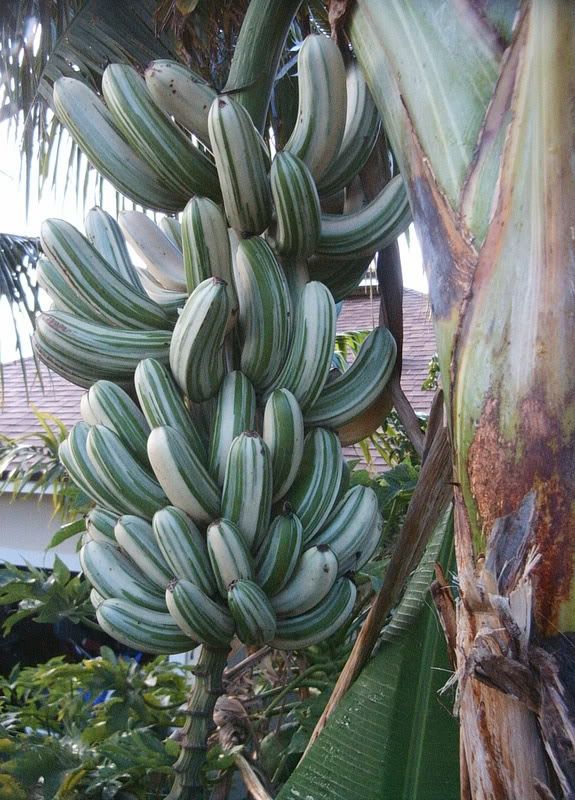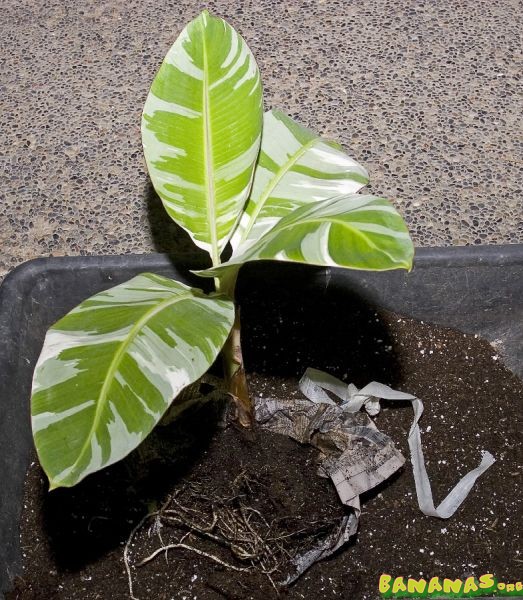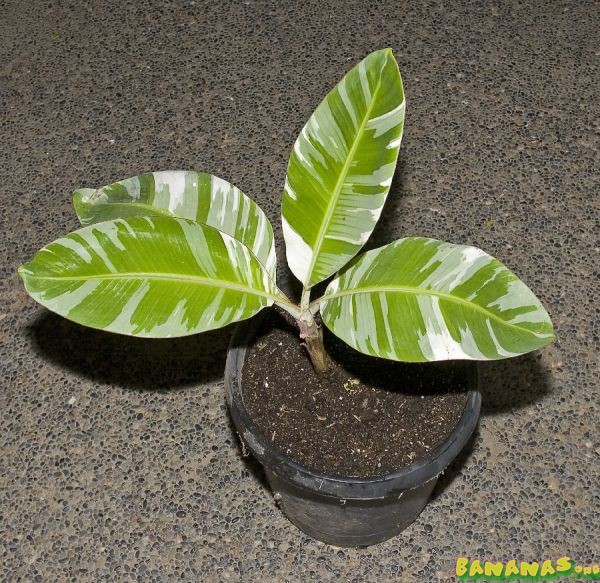Musa 'Ae Ae'
From Bananas Wiki
| Revision as of 09:15, 9 August 2008 (edit) MediaHound (Talk | contribs) (→Members Growing This Banana) ← Previous diff |
Revision as of 12:54, 2 October 2008 (edit) Bananaman88 (Talk | contribs) (→Members Growing This Banana) Next diff → |
||
| Line 93: | Line 93: | ||
| ===Members Growing This Banana=== | ===Members Growing This Banana=== | ||
| <googlemap lat="29.840644" lon="-26.015625"> | <googlemap lat="29.840644" lon="-26.015625"> | ||
| - | 26.063414912034293, -80.25358263521576, I'm growing Ae Ae! [[User:MediaHound]] | + | 26.063414912034293, -80.25358263521576, I'm growing Ae Ae! [[User:MediaHound]]29.54239832, -95.2312088, Bananaman88-Pearland TX [[User:bananaman88]] |
| 38.14559382685236, -121.68171644210815, [[User:harveyc]] | 38.14559382685236, -121.68171644210815, [[User:harveyc]] | ||
| 36.22084858508668, -115.15327870845795, [[User:Chironex]] | 36.22084858508668, -115.15327870845795, [[User:Chironex]] | ||
Revision as of 12:54, 2 October 2008
Contents |
Cultivar Name
Synonyms
Musa 'aeae', Musa 'ae ae', Musa AeAe, Musa aeae, Musa 'AeAe', ae ae, AeAe, aeae, AEAE, Ae Ae, Sacred Banana, Koae, Hawaiian variegated, koa'e, manini
Pictures

(credit MediaHound)

(credit jeffreyp)

(credit tyoro0219)
(credit harveyc)
(credit harveyc)
Description
Koa'e is the tropic bird and (a'e a'e) means 'hair prematurely graying' and the manini fish has light and dark stripes. A maoli variety bananaplant. Spectacular variegated leaves of multishades of green and white colors and they even produce variegated fruit. Fruit is tasty ripe or cooked. Primarily a dessert banana. This banana is very rare and limited in supply. This plant is very expensive. It has not yet been propagated successfully using tissue culture. Only one in 4 pups retain the white variegation of the mother corm. That is why it remains rare. This variety has a colorful foliage. green and white. Beautiful but demanding. Need some special care to show its best: acid soil (ph 6.0 or less), partial shade and protection from high winds to prevent drying and sun burning.
- Genetic Group - AA?
Origin
Hawaii
Usage
Cooking, dessert, and ornamental foliage. Unusual because it's not common for a banana to share these three uses.
Flowering
- Time To Bloom -
- Time To Harvest -
Cultivation
- Mature Height - 18ft.
- Survival Zone - 9b
- Fruiting Zone -
- Cold Hardiness -
- Wind -
- Taste Description -
- Personal Notes - I have not had success with Ae Ae, but would try again if it were very healthy stock. Apparently there's a few strains, some hardier than others. I failed with two plants from the same corm, a corm which I later found out did not survive a flooded container after a hurricane. So the strain I failed with is now lost anyway. Wish me good luck for next time, I would love to have one MediaHound 22:33, 2 November 2006 (EST)
In disuccsions with user "jnstropic" (Jordon) about 'Ae Ae' cultivation, he reports that his successfuly 'Ae Ae' cultivation has been taken place with alkaline soils. Possibly, root formation is better in alkaline conditions. Once established he will often use a palm fertilizer but may use potassium nitrate to make plants more robust. harveyc Sept 6, 2007
- Some have asked, "why don't they just tissue culture the 'Ae Ae'?"... Well, here is some info on why not...
- Varig8 (miamimax)is quoted as saying:
- "Now as for AeAe and variations on sucker coloration and amounts of variegation in them; AeAe is a somatic variegate as opposed to a genetic *variegate- (a 'sport'or chimera). Genetic variegates are stable and come true from seed and can easily be tissue cultured. In AeAe the amount of *variegation in each plant depends on; #1. How much mutant tissue is in the apical meristem, and #2. Where that mutant tissue is in the apical *meristem when a sucker is developing in the corm. This mutant tissue moves and revolves around the apical meristem. Some AeAe have LOTS of *white, some have a little with shades of different greens and greys.Some AeAe are completely green. They are ALL still AeAe. When the AeAe *produces suckers, they will oftentimes produce pure white suckers, which die right away if removed, or languish while feeding off the mother *until it eventually dies. It will also send up some normal green suckers, and then you'll get a few nice evenly proportioned variegated suckers. *This is the reason they remain expensive. The better variegated plant you start with, the better chance you have at getting more variegated *suckers, as this plant will have more mutant tissue in it's apical meristem." - source on the gardenweb forum at *http://forums.gardenweb.com/forums/load/banana/msg0107082717618.html
- He also posted on this thread http://forums.gardenweb.com/forums/load/banana/msg0420263316572.html but I think Frank's (aka "Bigdog") comments *were *particularly helpful in explaining this (excerpt from Jun 26, 07 post):
- Quote from Bigdog:
- "There are periclinal, mericlinal, and sectorial arrangements in the apical meristem that can produce variegation. Periclinal arrangements are *where a layer of mutated tissue completely surrounds an inner core of nonmutated tissue. Mericlinal arrangements are where cells that carry the *mutant gene occupy only a part of the outer cell layer of the plant. Sectorial arrangements is where the mutated tissue involves a sector of the *stem but extends all the way from the surface to the center. This type is rare, usually only occuring in an embryo or root tip, and quickly *reverts to either periclinal or mericlinal chimeras. I believe that the AeAe fall under the mericlinal category. I'm not really certain what *somatic variegation is...although I thought it had something to do with tissue culture. Anyhow, tissue culturing a mericlinal chimera would *result in an all-green or all-white plant it would seem, depending on where the tissue was taken on the apical meristem."
- posted by klemmthamm November 26, 2007 - credit to harveyc for finding the excerpts
Known Afflictions
Sun damage to young plants, but they can be acclimated to full sun, provided everything else is in good order, such as moisture.
- Pests -
- Susceptible Diseases -
- Resistant Diseases -
Research Notes
- Typical Price Range - $100 through $300
Members Growing This Banana
<googlemap lat="29.840644" lon="-26.015625"> 26.063414912034293, -80.25358263521576, I'm growing Ae Ae! User:MediaHound29.54239832, -95.2312088, Bananaman88-Pearland TX User:bananaman88 38.14559382685236, -121.68171644210815, User:harveyc 36.22084858508668, -115.15327870845795, User:Chironex </googlemap>
External
- Sources


